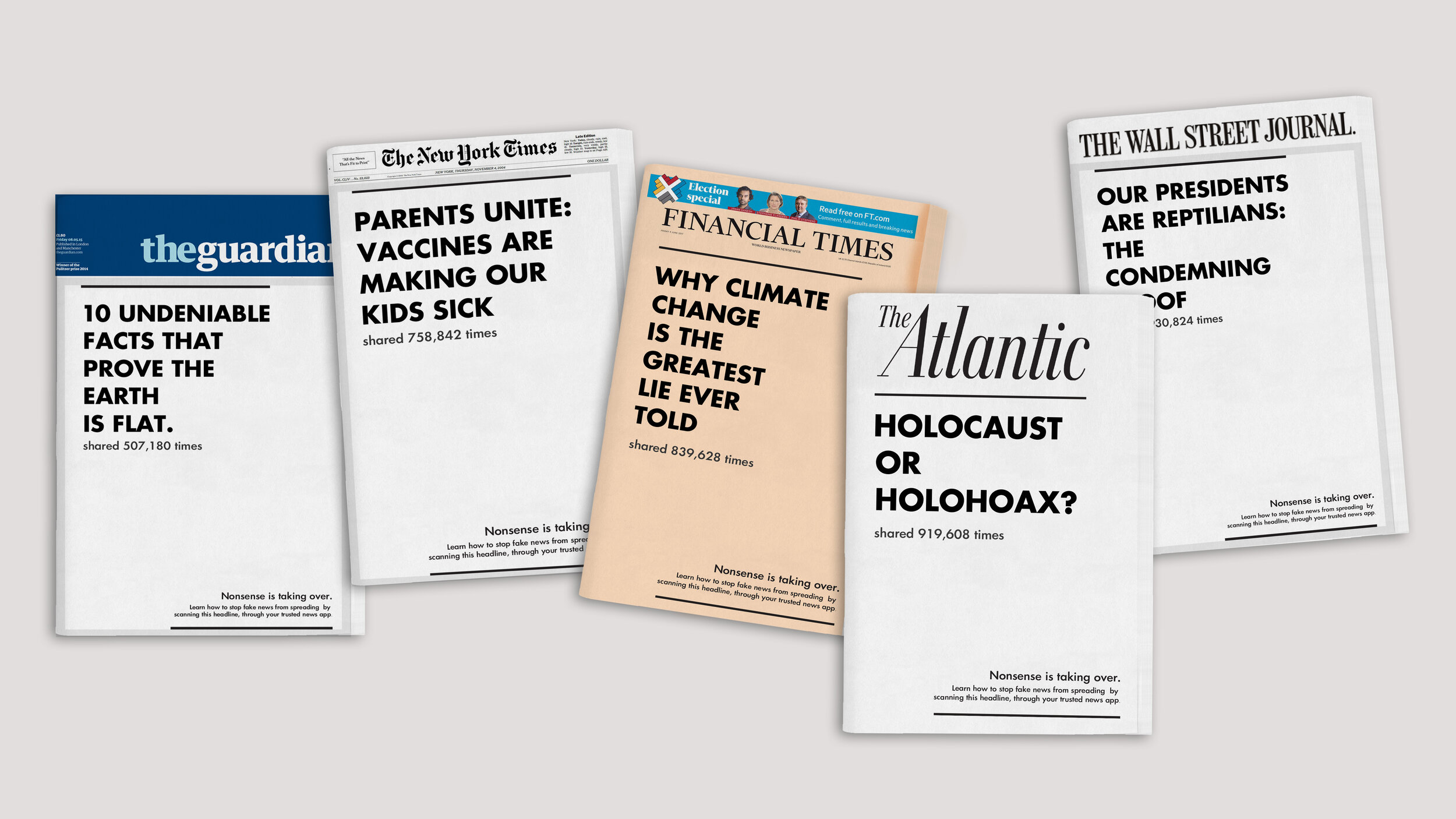Fake News Awareness Campaign
What exactly is the definition of fake news?
Clickbait headlines, propaganda articles, parodies and biased views are marking the thin lines of misinformation. However, the impact of fake news is obvious all over our digital lives and has already gone too far. Even the most absurd stories and theories find supporters and believers that are coming together online, not being able to tell fact from fiction.
THE IDEA IN A SENTENCE
A campaign dedicated to expose the absurdity of fake news in the real world, introduce ways to stop the sharing madness and turn to real journalism instead.
OOH & Print
The Nonsense Campaign starts with exposing ridiculous fake news headlines shared thousands of times online on huge billboards, bus stops and front pages of newspapers and magazines.
We make people confront what they’re reading and sharing online and with their sharing rate we make a statement on the massive impact that misinformation has in our lives.
AR FEATURE
Further on we took the game back to the digital world, where all this nonsense is actually happening, and we try to suggest a solution to this madness. By collaborating with the most prominent news organizations, we add a special AR feature in their apps.
Educational content
Through this feature, readers can scan the fake news that they find in the city to access educational content about how to spot fake news and what to check before sharing a story online. This way, not only awareness is raised, but the readers find themselves navigating in reliable news pages with high editorial standards, getting in touch with real journalism and a handful of trustworthy sources to check what they read online before sharing.
Resolution
Not only awareness is raised, but the readers find themselves navigating in reliable news pages, getting in touch with real journalism and a handful of trustworthy sources to check what they read online before sharing.
Eurobest 2019 Greece | The European Awards for Creativity
Creative Team:
Art Director: Amanda Galal
Copywriter: Zoe Boukouvala
Award: 2nd Prize






